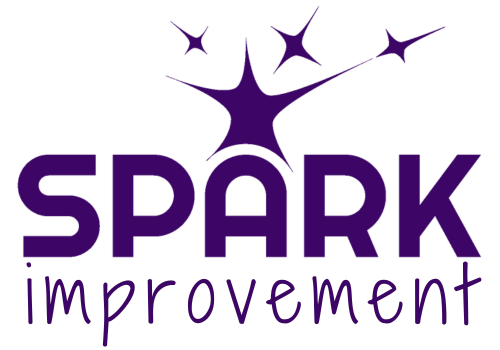My Journey to Kata
I have been immersed in the world of Continuous Improvement for more than two decades.
Way back at the beginning, during my year in industry as part of my Mechanical Engineering degree, I worked for a large manufacturing company as a projects engineer. One of my major projects was working with teams on the shopfloor to improve productivity.
I had learned about Industrial Engineering, Continuous Improvement and Lean Thinking at university, but now I was starting to see the practical side of this. The challenges of inspiring and engaging people.
I LOVED it.
I enjoyed nothing more than helping a team achieve their goal. Helping them improve their workplace.
But early on, I found I had a problem.
I didn’t understand the machinery.
I didn’t understand the processes.
This felt familiar to me. Two years earlier, when I started my engineering degree, I quickly became aware that I did not have the practical skills of all of my peers.
They would talk about the intricate details of gearing systems, which they understood as they had rebuilt cars growing up.
They would talk about the performance differences of engine piston layouts, because they’d spent years reading and talking about performance cars.
But I had never done these things. I was fascinated by machinery, talented at maths and enjoyed design. But I had little PRACTICAL experience.
Throughout my degree I felt a strong sense of what I now know to be imposter syndrome. I felt like I wasn’t really good enough to be there.
But I was determined to finish, and to get a good grade.
So I learnt to get around my feelings, by studying super hard and getting advice from experts.
I traded with my peers to help – they’d coach me on a subject and I’d help them with their technical drawing.
I spent HOURS in the library.
And it worked. I got good grades.
But then all of a sudden, I’m out in industry for my placement, and I feel the exact same thing.
I don’t know the answers.
I don’t understand the problem.
I can’t tell them how to solve this.
So, because I was determined to make it work and not reveal my shortcomings, I started asking questions.
I paid close attention to the people in the teams and I would gently nudge them if I felt they had something to say.
I learned how to visualise data so that I could show it to the teams and ask them what they could see. Were there patterns? Were there surprising trends?
I never had the answers or the solutions, and gradually I realised that that was okay.
In fact that was better than ok, that was AWESOME.
Because I, without really knowing it, built the habit of always asking questions and never giving answers, and by doing this I was helping others find their answers.
I have carried this on throughout my career. This principle is at the core of my business.
I won’t ever tell anyone the answers to their problems, the solutions to their issues. I don’t go in to a company and ‘do’ things for them.
But I will stand side by side with them and help them figure it out. I will ask the questions that need to be asked, sometimes over and over again.
I called my business ‘Spark Improvement’ because it describes exactly what I want to do – to spark ideas, to spark excitement, to spark change.
Lean Thinking has always been a huge part of my work. I was lucky enough to be mentored by an incredible Lean expert early on in my career. The tools, techniques and principles are a consistent thread through my years in industry.
But there was always something missing.
Something I didn’t really have structure, or a framework for.
And that was exactly how to guide an individual, or a team, through an improvement.
I mean, I did it, I worked with hundreds of people helping them to improve their processes, systems, and environment.
But I didn’t have a robust WAY of doing that – of asking those questions, of making their journey as effective as possible.
But now I do.
And it’s called Kata.
I am ashamed to say I had the Toyota Kata books on my shelf for about 4 years. I’d bought them as it sounded interesting. I read them and thought ‘yeah, okay, that seems obvious’.
I think I thought it seemed simple, but also that it was somehow at odds with the way I’d been working for so long.
I’m doing okay THIS way, the ‘Lean’ way, so I don’t need to change, no?
What a mistake!
This year I took a course to learn more about Kata. For some reason that I cannot explain, I decided I needed to understand it better. Reading the books was not enough, I wanted to learn it from an seasoned practitioner. I was lucky enough to be trained by the brilliant Tilo Schwarz, an expert in Toyota Kata.
Suddenly, the light went on.
Since then I have also had the privilege to be coached by some incredible world-renowned Kata Coaches, including Tracy Defoe and Julie Simmons.
Over my coming articles I will go into more detail on my learnings through the training; through being coached and stretched; and through putting it into practice.
I’ll share information and resources that might be helpful to you if you are interested in learning more about Kata.
I’ll explain how my journey unfolded, and how I am now weaving Kata into every single day.
Are you on a Kata journey? If so, I would love to hear about it.



